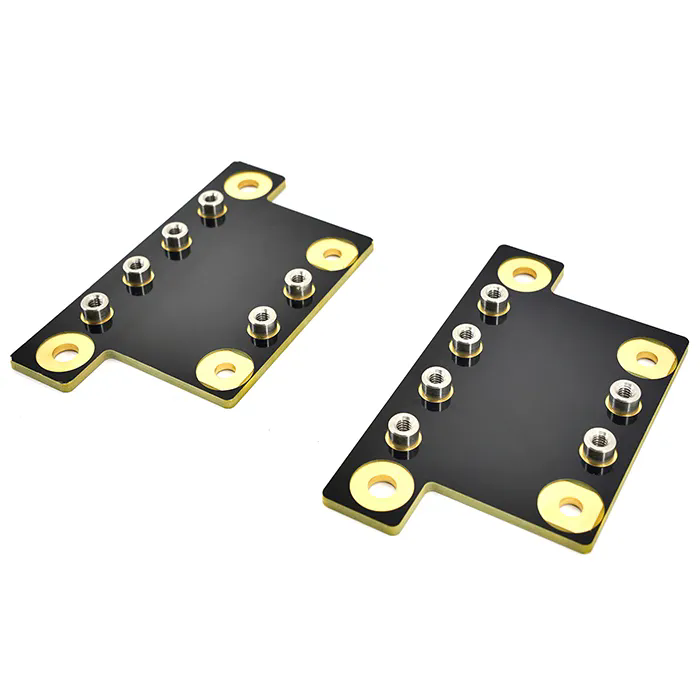Embedded Busbar PCBs: Advancing Power Distribution in Modern Electronics
2024-08-23
In the realm of modern electronics, efficient power distribution is crucial for ensuring the reliable operation of electronic devices and systems. Embedded busbar PCBs (Printed Circuit Boards) have emerged as a sophisticated solution to manage power distribution in compact and high-performance applications. This blog explores what embedded busbar PCBs are, their advantages, applications, and how they are revolutionizing power management in electronics.
What is an Embedded Busbar PCB?
An embedded busbar PCB integrates busbars—conductive bars used to distribute electrical power—directly into the printed circuit board. Unlike traditional PCBs, where busbars are external components, embedded busbar PCBs incorporate these elements within the PCB layers. This design allows for more efficient power distribution and reduces the need for additional components, leading to a more compact and streamlined design.
Embedded busbars can be made from various conductive materials such as copper or aluminum and are typically placed within the PCB layers to connect different parts of the circuit. This integration helps to optimize space and improve the overall performance of electronic devices.
How Does an Embedded Busbar PCB Work?
1. Power Distribution: Embedded busbars act as conduits for electrical power, distributing it evenly across different parts of the PCB. This reduces voltage drops and ensures stable power supply to various components.
2. Thermal Management: By embedding busbars within the PCB, heat generated by power distribution can be managed more effectively. The busbars help to dissipate heat away from sensitive components, improving overall thermal performance.
3. Space Optimization: Traditional busbars often require additional space and mounting hardware. Embedded busbars eliminate the need for these extra components, allowing for a more compact and efficient PCB design.
4. Reduced Electrical Noise: Integrated busbars help to minimize electrical noise and interference by providing a more direct and controlled path for power distribution. This enhances the performance and reliability of the electronic device.
5. Improved Reliability: The integration of busbars within the PCB reduces the number of external connections and potential points of failure. This results in a more reliable and robust power distribution system.
Benefits of Embedded Busbar PCBs
1. Enhanced Performance: Embedded busbars offer improved electrical performance by providing a more direct and efficient path for power distribution. This can lead to better overall performance and stability of the electronic device.
2. Compact Design: The integration of busbars within the PCB allows for a more compact design, reducing the need for additional components and freeing up space for other functionalities.
3. Cost Efficiency: By eliminating the need for external busbars and associated mounting hardware, embedded busbars can reduce manufacturing and assembly costs. This cost efficiency is particularly beneficial for high-volume production.
4. Improved Thermal Management: Embedded busbars help to manage heat more effectively, preventing overheating of sensitive components and improving the overall thermal performance of the PCB.
5. Reduced Electrical Noise: The design of embedded busbars minimizes electrical noise and interference, which can enhance the performance and reliability of the electronic device.
6. Simplified Assembly: Integrating busbars into the PCB simplifies the assembly process by reducing the number of external components and connections. This can lead to faster and more efficient production.
7. Increased Reliability: With fewer external connections and components, embedded busbar PCBs offer increased reliability and durability, reducing the risk of failure and maintenance issues.
Applications of Embedded Busbar PCBs
1. Consumer Electronics: Embedded busbar PCBs are used in consumer electronics such as smartphones, tablets, and laptops, where space and performance are critical. They help to ensure efficient power distribution and reliable operation.
2. Automotive: In the automotive industry, embedded busbar PCBs are used in various systems, including power distribution units and control modules. Their compact design and reliability make them ideal for automotive applications.
3. Telecommunications: Telecommunications equipment, such as routers and base stations, benefit from embedded busbar PCBs due to their ability to manage power efficiently and reduce electrical noise.
4. Industrial Equipment: Embedded busbar PCBs are used in industrial machinery and equipment, where reliable power distribution and thermal management are essential for optimal performance.
5. Medical Devices: In medical devices, embedded busbar PCBs help to ensure reliable power distribution and minimize electrical interference, which is crucial for the accurate operation of sensitive medical equipment.
6. Aerospace: The aerospace industry uses embedded busbar PCBs in avionics and other critical systems. The compact design and reliability of these PCBs are essential for ensuring safe and efficient operation in demanding environments.
7. Power Supplies: Embedded busbars are used in power supply units to distribute power efficiently and manage heat. Their integration helps to improve the performance and reliability of power supplies.
Designing and Manufacturing Embedded Busbar PCBs
1. Material Selection: Choose appropriate conductive materials for the busbars, such as copper or aluminum, based on the power requirements and thermal considerations of the application.
2. Design Considerations: Design the PCB layout to incorporate the busbars effectively, ensuring proper placement and connections to optimize power distribution and thermal management.
3. Thermal Analysis: Perform thermal analysis to ensure that the embedded busbars can manage heat effectively and prevent overheating of sensitive components.
4. Manufacturing Techniques: Use advanced manufacturing techniques such as multilayer PCB technology and embedded component technology to integrate busbars into the PCB layers.
5. Quality Control: Implement rigorous quality control measures to ensure the reliability and performance of the embedded busbar PCBs. This includes testing for electrical performance, thermal management, and mechanical integrity.
Conclusion
Embedded busbar PCBs represent a significant advancement in power distribution technology, offering enhanced performance, compact design, and improved reliability. By integrating busbars directly into the PCB layers, manufacturers can achieve more efficient power distribution, better thermal management, and reduced electrical noise. As technology continues to advance and electronic devices become more compact and demanding, embedded busbar PCBs will play an increasingly important role in meeting these requirements. Whether for consumer electronics, automotive, telecommunications, or other applications, embedded busbar PCBs provide a sophisticated solution for modern power management needs.



